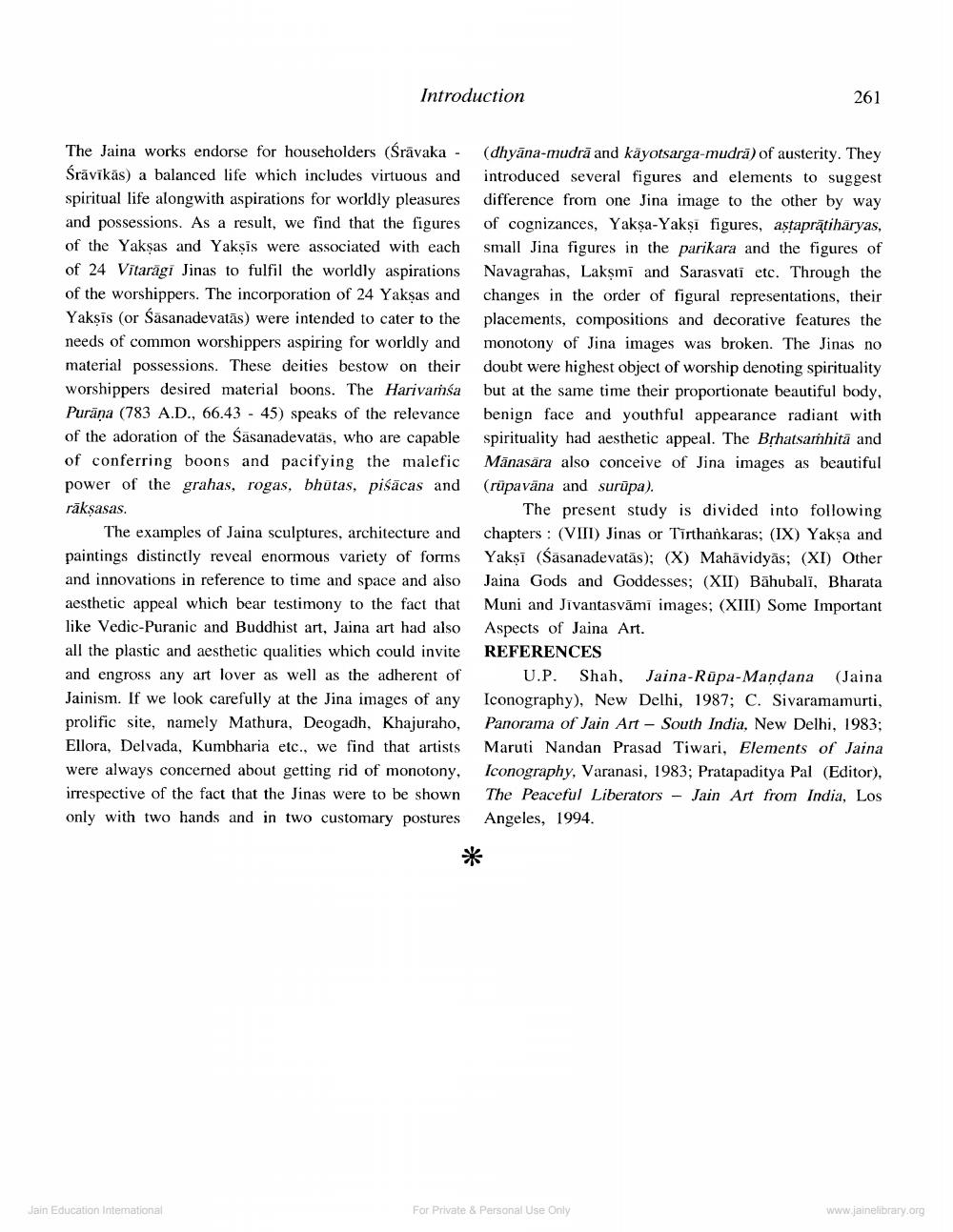________________
Introduction
261
The Jaina works endorse for householders (Śrāvaka - (dhyāna-mudrā and käyotsarga-mudrā) of austerity. They Śrāvikas) a balanced life which includes virtuous and introduced several figures and elements to suggest spiritual life alongwith aspirations for worldly pleasures difference from one Jina image to the other by way and possessions. As a result, we find that the figures of cognizances, Yakşa-Yakși figures, astaprātihāryas, of the Yakşas and Yaksis were associated with each small Jina figures in the parikara and the figures of of 24 Vitaragi Jinas to fulfil the worldly aspirations Navagrahas, Lakşmi and Sarasvati etc. Through the of the worshippers. The incorporation of 24 Yaksas and changes in the order of figural representations, their Yakṣīs (or Sasanadevatās) were intended to cater to the placements, compositions and decorative features the needs of common worshippers aspiring for worldly and monotony of Jina images was broken. The Jinas no material possessions. These deities bestow on their doubt were highest object of worship denoting spirituality worshippers desired material boons. The Harivamsa but at the same time their proportionate beautiful body, Purāņa (783 A.D., 66.43 - 45) speaks of the relevance benign face and youthful appearance radiant with of the adoration of the Sasanadevatās, who are capable spirituality had aesthetic appeal. The BỊhatsaṁhita and of conferring boons and pacifying the malefic Mānasära also conceive of Jina images as beautiful power of the grahas, rogas, bhūtas, piśācas and (rüpavāna and surūpa). rākşasas.
The present study is divided into following The examples of Jaina sculptures, architecture and chapters : (VIII) Jinas or Tīrthankaras; (IX) Yakșa and paintings distinctly reveal enormous variety of forms Yakşi (sasanadevatās); (X) Mahavidyās; (XI) Other and innovations in reference to time and space and also Jaina Gods and Goddesses; (XII) Bāhubali, Bharata aesthetic appeal which bear testimony to the fact that Muni and Jivantasvāmi images; (XIII) Some Important like Vedic-Puranic and Buddhist art, Jaina art had also Aspects of Jaina Art. all the plastic and aesthetic qualities which could invite REFERENCES and engross any art lover as well as the adherent of U.P. Shah, Jaina-Rupa-Mandana (Jaina Jainism. If we look carefully at the Jina images of any Iconography), New Delhi, 1987; C. Sivaramamurti, prolific site, namely Mathura, Deogadh, Khajuraho, Panorama of Jain Art - South India, New Delhi, 1983; Ellora, Delvada, Kumbharia etc., we find that artists Maruti Nandan Prasad Tiwari, Elements of Jaina were always concerned about getting rid of monotony, iconography, Varanasi, 1983; Pratapaditya Pal (Editor), irrespective of the fact that the Jinas were to be shown The Peaceful Liberators - Jain Art from India, Los only with two hands and in two customary postures Angeles, 1994.
*
Jain Education Intemational
For Private & Personal Use Only
www.jainelibrary.org




